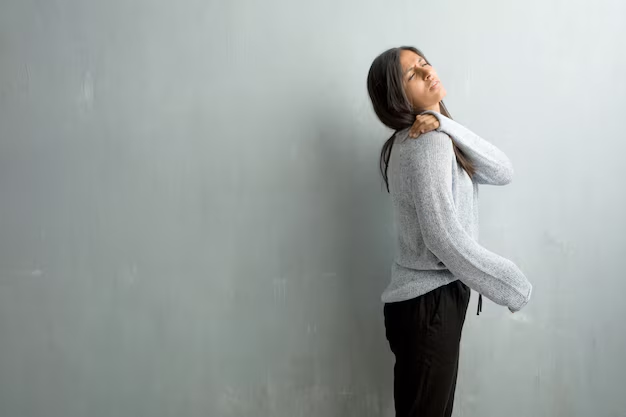Understanding Scoliosis: A Comprehensive Guide to Curvature of the Spine
When you hear the term scoliosis, what comes to mind? Perhaps you're thinking of a medical exam from your school days, or maybe you've recently received a diagnosis. Whatever your level of familiarity, understanding scoliosis can unlock a world of helpful insights into spine health. So, what is scoliosis, and what does it mean for you or your loved ones? Let’s delve into this fascinating topic and explore its complex layers.
What is Scoliosis?
Scoliosis is a condition characterized by an abnormal curvature of the spine. Instead of a straight alignment, a spine affected by scoliosis may curve into an "S" or "C" shape. While a perfectly straight spine is a common ideal, scoliosis offers a more intricate curvature, affecting the overall symmetry and alignment of one's body.
Types of Scoliosis
Scoliosis isn't a one-size-fits-all condition; it manifests in different forms, each with its own nuances:
- Idiopathic Scoliosis: The most common type, particularly in adolescents, and it represents about 80% of cases. The term "idiopathic" means the exact cause is unknown.
- Congenital Scoliosis: Present at birth, this form results from malformations in the vertebrae that occur during fetal development.
- Neuromuscular Scoliosis: Associated with conditions that affect muscles and nerves, such as cerebral palsy or muscular dystrophy.
- Degenerative Scoliosis: Typically appears in adults and is often linked to the wear and tear of the spine due to aging.
Symptoms to Watch For
Recognizing scoliosis can sometimes be challenging, given its subtlety in early stages. However, some symptoms to watch for include:
- Uneven shoulders or hips
- A prominent rib cage on one side
- An off-center head position
- Back pain or discomfort
- Arm length discrepancy when standing
While these symptoms can signal scoliosis, a thorough examination by a healthcare professional is crucial for a definitive diagnosis.
The Causes Behind Scoliosis
While the exact causes of scoliosis—especially idiopathic forms—remain elusive, several factors may contribute:
- Genetics: A family history of scoliosis can increase the likelihood of the condition being passed down.
- Growth Spurts: Rapid growth phases, particularly during adolescence, can trigger or worsen curvature.
- Neuromuscular Conditions: Disorders affecting muscle control can lead to spinal curvature, as the muscles fail to properly support the spine.
Diagnostic Approaches
Understanding scoliosis begins with a diagnostic evaluation. Typically, this involves:
- Physical Examination: A doctor may assess posture and symmetry of shoulders and hips.
- X-Rays: These provide a clear image of the spine, confirming curvature and severity.
- Scoliometer: Sometimes used to measure the degree of spinal curvature, though X-rays remain the gold standard.
Exploring Treatment Options
When it comes to managing scoliosis, understanding treatment options is key. Each approach depends on the severity and progression of the condition:
Bracing
For those still growing, bracing can help manage spinal curves. While it won't straighten the spine, it can prevent further curvature, offering a less invasive option for adolescents:
- Flexible and Hard Braces: Options vary depending on the individual needs and comfort.
- Worn Consistently: Often needed for up to 23 hours a day.
Physical Therapy
Physical therapy can build core strength, improve posture, and maintain flexibility. While it doesn't reverse scoliosis, it can alleviate pain and improve quality of life.
- Custom Exercises: Target specific areas for strength and flexibility.
- Posture Training: Helps in maintaining spinal alignment during everyday activities.
Surgery
In more severe cases, surgery may become a consideration:
- Spinal Fusion: Commonly uses rods, hooks, and screws to align and fuse the curved vertebrae.
- Growth Rods: For growing children, these adjustable rods accommodate future growth.
It's essential to discuss with healthcare providers to determine the best path forward, tailored to individual health needs and lifestyle factors.
Living with Scoliosis
Managing scoliosis involves more than medical interventions; it’s about holistic health and lifestyle adjustments:
- Mindful Movement: Activities like yoga and swimming are gentle on the back and promote core strength.
- Ergonomic Support: Invest in quality chairs or sleeping arrangements that support spine health.
- Mental Health Resources: Support groups or counseling can offer emotional aid and community connection.
Myths and Misconceptions
A topic as nuanced as scoliosis generates its fair share of myths:
Only Affects Adolescents: While common in youth, scoliosis affects all ages.
Always Painful: Not all cases result in pain; some experience little to no discomfort.
Cured by Exercise Alone: While beneficial, exercises cannot reverse scoliosis but help in management.
Key Takeaway
Understanding scoliosis opens doors to informed decisions about your health or the health of someone you care about. Whether you're recognizing symptoms or evaluating treatment options, having a comprehensive view of the condition is invaluable.
Quick Summary: Navigating Scoliosis 🌟
- Scoliosis Overview: Spine curvature producing "S" or "C" shapes.
- Types: Idiopathic (common), Congenital, Neuromuscular, Degenerative.
- Symptoms: Uneven shoulders, rib prominence, possible back discomfort.
- Causes: Often unknown; includes genetics and neuromuscular conditions.
- Diagnosis: Through physical exams and X-rays.
- Treatment: Ranges from bracing and therapy to surgery.
- Living Well: Emphasizes holistic approach—mindful movement, ergonomics, community support.
Understanding scoliosis can empower you to make well-informed decisions, optimize health strategies, and embrace life with confidence, knowing you manage your condition with insight and care. 🌈
